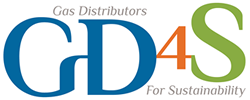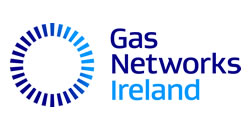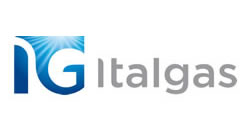Feedback on the EU Energy Efficiency Directive
Feedback reference F2751950
Submitted on 17 November 2021
Submitted by Philippe GARREC
User type Company/business organisation
Organisation Gas Distributors for Sustainability
Organisation size Large (250 or more)
Transparency register number 382692732615-35
Country of origin Belgium
Initiative EU energy efficiency directive (EED) – evaluation and review
GD4S welcomes the EC decision to revise the EED, and its inclusion of the Energy Efficiency First Principle. A broader view of efficiency, such as Life Cycle Analysis (LCA) and system benefits, is required to ensure that carbon emission are not just displaced but avoided.
- An LCA to assess the overall CO2 and cost-efficiency, including in manufacturing and recycling.
- A system approach to ensure that efficiency gain at one point of the energy chain does not result in greater inefficiency in another.
Demand flexibility can increase the energy production efficiency, but only non-time constrained flexibility can really allow to alleviate the several days design criteria required for heating. Reinforcing gas and electricity coupling, at both production and consumers level, will provide the easiest, fastest, safest, and most affordable pathway to achieve energy transition leaving no-one behind :
1. The potential of renewable gas is large and can ensure a sizable share of the decarbonisation. Decentralised biomethane potential is estimated at 1200 TWh (EBA). The Danish example shows that its development can happen fast if well supported. Renewable Hydrogen potential, produced from otherwise wasted renewable electricity, is even larger, at 1700 TWh (Gas for Climate) . These figures are to be compared to the 2400 TWh of present final energy use of natural gas (Eurostat).
2. Technologies using gas are immediately available, cost-effective, and versatile. Replacement of an old boiler by a high-performance condensing one can increase the building energy efficient by up to 30% for a few thousand euros, making it a highly CO2 efficient investment, even before considering the use of renewables gases, a first step to decarbonisation. Not all buildings can be retrofitted with Heat Pumps.
3. Gas technologies are easy to couple with electricity. Combining gas and electric solutions in a building; like a boiler and a heat pump, or cogeneration, create the non-time constrained demand flexibility required by the transition. Hybridisation is easier to achieve than full electrification.
4. Gas technology can be renewable ready at very low cost. Very little CO2 is involved in their manufacture and recycling, making them interesting for many heating solutions, especially when electrification via heat pumps is not feasible.
5. All these advantages can, and should, be combined. A smooth step by step decarbonisation could be completed by combining renovation steps and heating system upgrades, done according to consumer capacity. Gas and Hybrids are compatible with staged renovation and growing rates of renewable gas and electricity, making them easy cost-effective solutions for homeowners, provided the energy tariff reflects the real energy production and infrastructure costs.
6. Gas infrastructure is a very efficient and cost-effective asset to transport, store and distribute large volumes of energy and is already designed to cover winter peak demand. Its low cost makes it suitable to manage peak demand. Coupling of gas and electricity infrastructure, via power to gas and appliances, allows for an efficient, safe, and affordable energy transition for all, by reducing the transition uncertainties and later ensuring an affordable and resilient fossil free energy system.
We therefore recommend:
1. Non time constrained demand flexibility is defined in EED.
2. demand-side capacity is considered in the EPBD, to develop “near 100% flexible buildings”.
3. CO2 emissions involved in equipment manufacture and recycling is displayed on appliance labels.
4. Public procurement should develop “near 100% non-time constrained flexible buildings”.
5. Local use of local renewable energy is promoted, to increase system resilience and public support; and
6. Consumers investing in demand flexibility capacity, should be incentivised to reward their contribution to energy system efficiency.
Submitted on 17 November 2021
Submitted by Philippe GARREC
User type Company/business organisation
Organisation Gas Distributors for Sustainability
Organisation size Large (250 or more)
Transparency register number 382692732615-35
Country of origin Belgium
Initiative EU energy efficiency directive (EED) – evaluation and review
GD4S welcomes the EC decision to revise the EED, and its inclusion of the Energy Efficiency First Principle. A broader view of efficiency, such as Life Cycle Analysis (LCA) and system benefits, is required to ensure that carbon emission are not just displaced but avoided.
- An LCA to assess the overall CO2 and cost-efficiency, including in manufacturing and recycling.
- A system approach to ensure that efficiency gain at one point of the energy chain does not result in greater inefficiency in another.
Demand flexibility can increase the energy production efficiency, but only non-time constrained flexibility can really allow to alleviate the several days design criteria required for heating. Reinforcing gas and electricity coupling, at both production and consumers level, will provide the easiest, fastest, safest, and most affordable pathway to achieve energy transition leaving no-one behind :
1. The potential of renewable gas is large and can ensure a sizable share of the decarbonisation. Decentralised biomethane potential is estimated at 1200 TWh (EBA). The Danish example shows that its development can happen fast if well supported. Renewable Hydrogen potential, produced from otherwise wasted renewable electricity, is even larger, at 1700 TWh (Gas for Climate) . These figures are to be compared to the 2400 TWh of present final energy use of natural gas (Eurostat).
2. Technologies using gas are immediately available, cost-effective, and versatile. Replacement of an old boiler by a high-performance condensing one can increase the building energy efficient by up to 30% for a few thousand euros, making it a highly CO2 efficient investment, even before considering the use of renewables gases, a first step to decarbonisation. Not all buildings can be retrofitted with Heat Pumps.
3. Gas technologies are easy to couple with electricity. Combining gas and electric solutions in a building; like a boiler and a heat pump, or cogeneration, create the non-time constrained demand flexibility required by the transition. Hybridisation is easier to achieve than full electrification.
4. Gas technology can be renewable ready at very low cost. Very little CO2 is involved in their manufacture and recycling, making them interesting for many heating solutions, especially when electrification via heat pumps is not feasible.
5. All these advantages can, and should, be combined. A smooth step by step decarbonisation could be completed by combining renovation steps and heating system upgrades, done according to consumer capacity. Gas and Hybrids are compatible with staged renovation and growing rates of renewable gas and electricity, making them easy cost-effective solutions for homeowners, provided the energy tariff reflects the real energy production and infrastructure costs.
6. Gas infrastructure is a very efficient and cost-effective asset to transport, store and distribute large volumes of energy and is already designed to cover winter peak demand. Its low cost makes it suitable to manage peak demand. Coupling of gas and electricity infrastructure, via power to gas and appliances, allows for an efficient, safe, and affordable energy transition for all, by reducing the transition uncertainties and later ensuring an affordable and resilient fossil free energy system.
We therefore recommend:
1. Non time constrained demand flexibility is defined in EED.
2. demand-side capacity is considered in the EPBD, to develop “near 100% flexible buildings”.
3. CO2 emissions involved in equipment manufacture and recycling is displayed on appliance labels.
4. Public procurement should develop “near 100% non-time constrained flexible buildings”.
5. Local use of local renewable energy is promoted, to increase system resilience and public support; and
6. Consumers investing in demand flexibility capacity, should be incentivised to reward their contribution to energy system efficiency.















